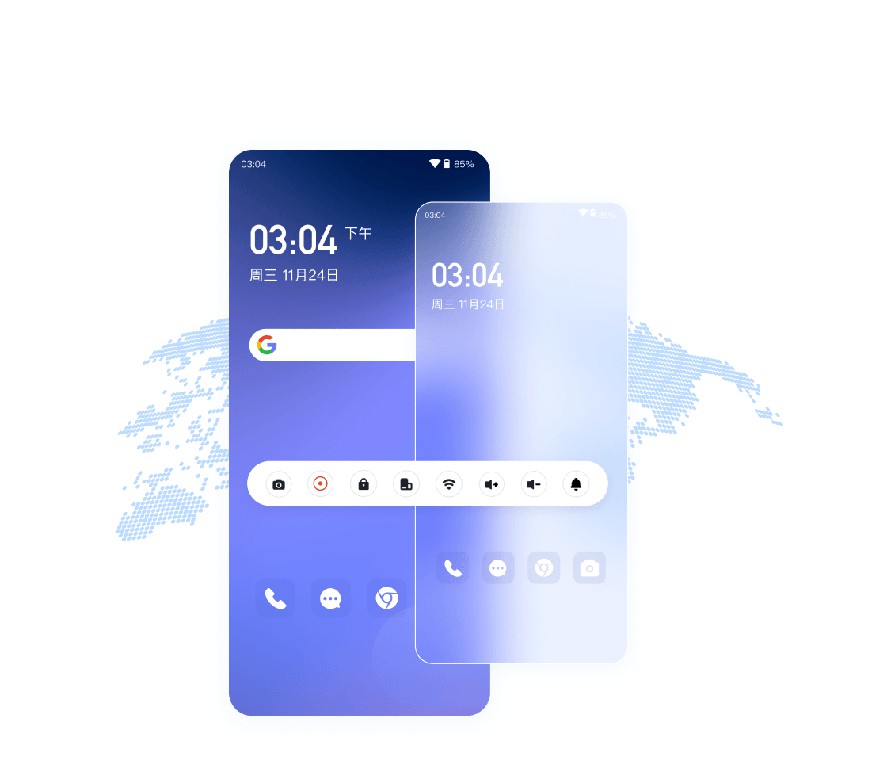Global IT supply chain
International transportation + IT O&M outsourcing + self-owned backbone network
A cloud phone is a highly advanced product that can accurately simulate the behaviors of real users, providing a seamless and immersive user experience. This article will delve into how cloud phones replicate real user operations and why they have become so popular among users.

I. How Does a Cloud Phone Simulate Real User Operations?
1. High-Performance Hardware Support
Cloud phones are powered by exceptional processors, large memory capacity, and ample storage, combined with high-speed network connections. This setup ensures that the user experience is almost identical to that of a physical smartphone. The robust hardware configuration supports smooth performance across various application scenarios.
2. Fully Simulated Operating System
Cloud phones operate on a fully replicated mobile operating system. Users can install and run a variety of apps on the cloud, just as they would on a physical phone. This operating system not only supports essential functionalities but also mimics real-life usage scenarios, making the experience comprehensive and versatile.
3. Realistic Network Environment
Whether it’s WiFi, 4G, or 5G, cloud phones can simulate real-world network conditions. Users have the flexibility to choose the appropriate network type based on their needs, making it ideal for testing and running applications that require different levels of network connectivity.
4. Intelligent Behavior Simulation
Cloud phones can replicate real user actions such as tapping, swiping, and typing. This makes them an excellent tool for testing app performance, evaluating user interaction, and conducting other assessments. The ability to simulate these behaviors provides accurate and reliable insights into the app’s usability and effectiveness.
II. Advantages of Cloud Phones
1. Access Anytime, Anywhere
One of the key benefits of cloud phones is that they are not bound by geographic or device limitations. As long as users are connected to the internet, they can access the cloud phone from any location at any time. This eliminates the hassle of carrying multiple physical devices and reduces the cost of purchasing hardware.
2. Support for Multiple Phone Models
Cloud phones offer a wide selection of virtual phone models, allowing users to install and test applications on different devices. For developers, this simplifies the process of cross-device compatibility testing, ensuring that their apps work seamlessly across various platforms.
3. Security and Data Protection
Advanced security technologies are employed in cloud phones to safeguard users’ privacy and data. Moreover, cloud-based data backup features provide an added layer of protection, ensuring that users can easily recover important information and prevent data loss.
4. Cost-Effective Solution
Compared to purchasing high-end physical smartphones, cloud phones offer a much more cost-efficient solution. Users only need to pay for the services they use, enabling them to enjoy the experience of a high-performance phone without the expense of buying and maintaining hardware. This significantly reduces the overall costs associated with device management.
In summary, cloud phones replicate real user behaviors, providing users with a convenient, secure, and cost-effective mobile experience. Whether you’re a developer, testing engineer, or everyday user, cloud phones can offer substantial benefits. As cloud phone technology continues to evolve and improve, their application is expected to expand even further. It’s likely that cloud phones will become the preferred choice for more users in the future. For more information, feel free to reach out to Ogcloud for inquiries.

International transportation + IT O&M outsourcing + self-owned backbone network

Cellular chips + overseas GPS + global acceleration network

Overseas server room nodes + dedicated lines + global acceleration network

Global acceleration network + self-developed patented technology + easy linking

Global Acceleration Network + Global Multi-Node + Cloud Network Integration


